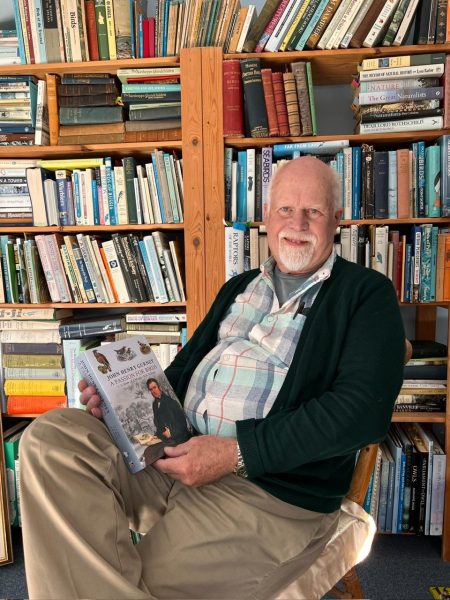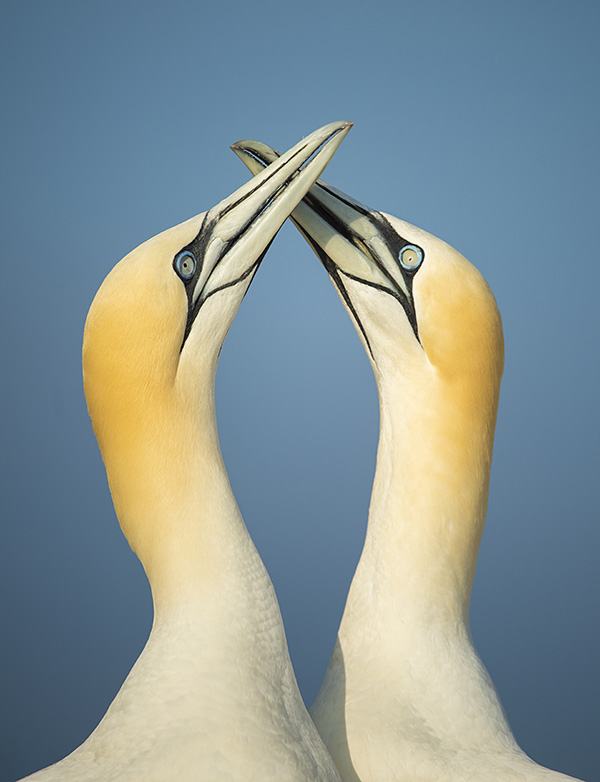Monday 10 November
John Henry Gurney: a Passion for Birds, Clive Slater
Clive Slater spoke on John Henry Gurney: a Passion for Birds. Clive is lead author on the biography of the same title that has just been published by John Beaufoy Publishing in association with the BOC. J. H. Gurney senior (1819-1890) grew up in a wealthy Quaker Norfolk banking family and from an early age developed a passion for bird collecting and study. Made a partner in Gurneys’ Bank at the early age of 21, he was elected an MP in 1854, but during this time was expanding his bird work from local studies to, in 1853, a quest to collect specimens of every bird-of-prey species world-wide and display them in the Norwich Museum. He gradually assembled a huge network of individuals who supplied him with specimens, including a wide range of southern African birds, which he studied closely and on which he published profusely. This bird collection and research continued despite him suffering catastrophic events in both his personal life, when his wife eloped with her groom in 1859, and in his professional life, when the bankruptcy of a bank of which he was a director precipitated a national banking crisis in 1866. By the end of his life, he had produced an extraordinary 500 publications, many illustrated by high calibre artists who he patronised, such as Joseph Wolf, and which gained him an international reputation as an authority on birds-of-prey and southern African ornithology. Despite a strong emphasis on Gurney’s ornithology, Clive nevertheless managed to touch on all these aspects of an extraordinary life, focusing in particular on an array of individuals with whom Gurney interacted closely, not least his ornithologically-inclined son, John Henry Gurney junior.

Thursday 23 October
A Quietening of the Woods: the Decline of Woodland Birds, Dr Richard Broughton
The 1,016th meeting of the Club was held in conjunction with the Linnean Society of London and at their premises on Thursday 23 October 2025. Dr Richard Broughton, Centre for Ecology and Hydrology, Wallingford, spoke on A Quietening of the Woods: the Decline of Woodland Birds. Richard has been studying woodland birds, and in particular the closely related Marsh Tit Poecile palustris and the Willow Tit P. montanus, for over 25 years, and recently produced an acclaimed monograph on these two tit species. He explained how an array of woodland birds has been declining in Britain over recent decades, with the Marsh and Willow Tits especially heavily affected, declining by 80% and 96% respectively since the late 1960s. The causes of these declines are complex and seem to vary at least in part between different species. Both Poecile tits are subordinate species but also hoard food, a trait that formerly gave them a competitive advantage over the more dominant, ecologically similar Great Tit Parus major and Blue Tit Cyanistes caeruleus during periods of food shortage. However, these dominant species have benefitted over recent decades from the surge in human provision of bird feeders, and their populations have increased greatly. A detailed long-term of Marsh Tits by Richard at his Monks Wood study site shows that problems with juvenile survival and recruitment seem to be driving this species’ local decline there. Willow Tits, unusually among tits, excavate their own nesting holes, from which they are increasingly then excluded by the dominant species, and this seems likely to be at least one factor underlying their decline. Overall, the talk was highly stimulating and thought-provoking, as evidenced by the large number of audience comments and queries that Richard received subsequently.


Gannets © Ben Andrews / RSPB
We hosted our annual event, Avian Odyssey in the Flett Theatre at the Natural History Museum, London on 20 September 2025.
Contributors
- African Bird Club (ABC) https://www.africanbirdclub.org/
- BBC Natural History Unit https://productions.bbcstudios.com/our-production-brands/the-natural-history-unit
- BirdLife International https://www.birdlife.org/
- British Trust for Ornithology (BTO) https://www.bto.org/
- Neotropical Birding and Conservation (NBC) https://www.neotropicalbirdclub.org/
- Oriental Bird Club (OBC) https://www.orientalbirdclub.org/
- The Ornithological Society of the Middle East (OSME) https://osme.org/
- The Royal Society for the Protection of Birds (RSPB) https://www.rspb.org.uk/
Monday 26th May
The Founding Feathers of the Barbary Dove Streptopelia risoria
Abstract: Linnaeus wrote about this bird, “nobis communis Turtur” (our common Turtle Dove), based on the fact that it was commonly kept in Europe. However, despite being common, the Barbary Dove has confused ornithologists, its origin and history having been a long-standing mystery. Although recent DNA work has now proved otherwise, some still consider the Barbary Dove and Eurasian Collared Dove Streptopelia decaocto to be the same species. As a domesticated bird, Barbary Dove has a world-wide distribution, and feral populations can flourish in the right habitats. The Eurasian Collared Dove now also occurs in most parts of the world due to its natural expansive drift, partly with some human help. Where the two species meet, they can hybridise, further confusing the picture. This talk will discuss the Barbary Dove’s true ancestry and consider its impact on current Eurasian Collared Dove populations.
Hein van Grouw is one of the senior Bird Curators at the NHM at Tring. Besides his nearly 30 years as a curator with a huge interest in nomenclature and taxonomy, he is also, like his predecessor Derek Goodwin, a keen bird breeder. He bred his first canaries when he was seven and got his first doves three years later. Since then, he has researched many different colour mutations in domesticated pigeons and different dove species, publishing the results in a variety of journals.

Monday 24th March
Interesting Bird Nests & Eggs – writing a popular book on 250 years of avian architecture.
Abstract: Starting in 1754 the Natural History Museum, UK has gradually assembled one of the largest and most comprehensive series of ornithology specimens in the world. There are over a million bird specimens in its research collections including several hundred thousand sets of eggs and nearly 5000 nests. For the last 23 years, Douglas G. D. Russell has been the curator responsible for the museum’s irreplaceable, historical archive of avian architecture. Over two years of work has resulted in a new book featuring 120 species accounts and incredible photography by Jonathon Jackson. Each account showcases a remarkable example of a nest and / or egg selected from 113 different bird families collected between 1768 and 2020. Using outstanding examples featured in the book, Douglas will discuss how ornithology, ecology, conservation, and history are interwoven into each specimen.
Biography: Douglas G. D. Russell is the Senior Curator responsible for the internationally renowned birds’ egg and nest collections at the Natural History Museum (NHM). After studying Biological Sciences at Edinburgh Napier University, he began his curatorial career at the Royal Museum of Scotland (now National Museum of Scotland) preparing bird specimens from the 1996 Sea Empress oil spill – an environmental catastrophe which resulted in the death of thousands of birds including Common and Velvet scoters, Guillemots, Red-breasted mergansers, and Razorbills amongst many others. Curatorial work at both the Natural History Museum and Scarborough Museum followed before taking on a new role leading public engagement in taxonomy and systematics at the NHM. In 2002 he became the curator of the egg and nest collection as part of a team of bird curators at the Natural History Museum, Tring.





